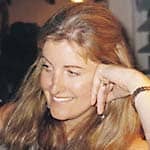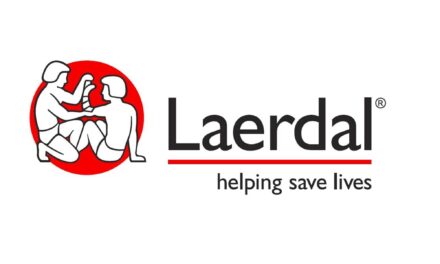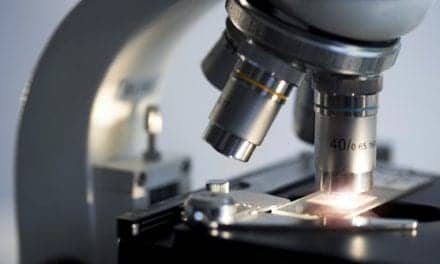An ancient Eastern breathing technique brings increased vitality to the West.

As we enter the new millennium, health care practitioners are going to be asked to deliver optimal care in an increasingly global society. To do this, we must be flexible and compassionate dealing with people whose values and beliefs may differ widely from our own. We face demands that are dramatically different from those placed on students who entered the respiratory profession a decade ago.1 We will be continually asked to work harder and smarter with fewer resources. It is vital that we find a balance that allows us to maintain a high quality of care in our work and personal life. We need to understand the complexities of the community we live in and the one we serve. We need to look around at this rich world of cultural diversity for answers that are already there.
When I entered college, my first declared major was psychology. During my studies, I was trying to appreciate varied outward behaviors and the motivation that stimulated them. In 1973, I attended respiratory school and was catapulted into a view of the body at a microscopic level. I then started my first job in a hospital and was blessed with the opportunity to work with people born with cystic fibrosis. To understand a terminal disease and help those I cared for, I began to merge my two disciplines. It could be described as merging the mind and body.
In the mid-1970s I was asked to participate in a program for children with asthma that would help improve and test their tolerance in physical education classes in California’s public schools. At this time, children with asthma were encouraged to refrain from any type of exercise. With the help of physical educators and a physical therapist, we helped to create a program called “Listen to Your Body.” We taught these children how to deal with panic and air hunger. They quickly learned how to focus on their breath, control the flow and rate of their breathing, and thus relax. After practicing these techniques, we moved the children into a swimming program that increased their stamina and confidence, and improved their overall health. At the time, I did not understand that what we were doing was understood and rooted in traditional Chinese medicine. This was the true beginning of my practice of QiGong, which has changed the way I view my responsibilities as a respiratory therapist.
This did not come without some resistance. Physicians who would later become my mentors initially thought what we were doing was dangerous and feared their authority was being usurped. This was my first lesson in persevering with something I knew to be true. It involved taking the time to observe and document the program’s findings to prove or disprove the worth of our objectives. In the case of the “Listen to Your Body” program, we chose our deciding criterion to be a reduction in days missed from school. This goal was accomplished. The other favorably documented variable was a decrease in the amount of medication taken by the children enrolled in the program. Thanks to the many people who have taken the time to publish their findings, the benefit of exercise for those with lung disease is well documented.2,3
Later, I had the opportunity to live for a few years in Japan, where I became intimately involved with Eastern philosophy. This is where I learned a method of healing that began with QiGong, which is the root of traditional Chinese medicine. It is a formulated system of healing that relies on understanding all that surrounds us and the relationships created within the environment we live in.
During that time in Japan, I experienced Eastern philosophy daily. It touched the most common tasks of my day. For example, while visiting the local grocery store, I would bow in unison with the person waiting on me. I was told that this ritual was created to honor the higher self in each of us, thus disallowing differentiation between the one serving and the one being served. I learned to serve others first and never myself as a ritual to remind the others that I was conscious of their being with me and that I would put their needs in front of mine. I learned firsthand the common saying that “the nail that sticks out is hammered down,” unlike the West where individuals are honored for being apart from groups and excelling on their own. I learned not to judge behavior according to an American or Western ideal. I often thought how useful some of this could be in my own country during a time when good service was becoming rare, and violence was increasing.
I realized how we all cross cultural lines every day of our lives. We dress for the medical culture as we go to work, and dress casually when we are at home. We change our vocabulary when we address those at work, and change it again when we speak to family members at home. Each part of our life becomes a subculture and we look within those parts for rules that establish an equal playing field.
The practice of QiGong was introduced to me by an acupuncturist who believed that it was vital for continuance of good health beyond what he could do during his treatments. He also believed that it was his responsibility to turn patients’ care over to them whenever possible to avoid the dependent model he saw too often in Western medicine. He said this dependent model was costly and unjust. As his needles stimulated Qi, the vital energy in traditional Chinese medicine, he wanted his clients to continue to cultivate better health on their own and he knew through his own practice that it worked. I maintain a deep respect for allopathic medicine and, like others, see this fusion of perspectives as only broadening the potential of what we can do. When asked what he saw as the merits of the two approaches toward health, Dr Lu of Yale Medical Center said, “They are like chopsticks and a bowl—two ways of getting at the rice.”4
QiGong may not be the system of healing you want to use on a bleeding patient in the emergency department, but it may be the system you want to incorporate for yourself when you are dealing with that traumatic situation both emotionally and physically. As I define what QiGong is, it is important to understand that I am an American translating a culture’s philosophy in my own words. I feel confident that I have retained the essence of QiGong, but the outward translation will most likely be colored by my cultural roots.
After more than 25 years of being a respiratory therapist, I want to share what I have learned with others. As I look at the community I serve today, I want to incorporate a broad philosophy of health care into my practice. I can already see that happening. People are accepting therapies as varied as acupuncture, herbal remedies, nutrition, and stress management into their own regimen of care. Medicine as we know it is going through nothing short of a revolution. A study conducted by the National Institutes of Health in 19985 found that four out of 10 people in the United States practice some type of alternative care. Stanford Medical Center, Palo Alto, Calif, recognizes that this is not just a fleeting trend, but a wave of the future. It has created the Osher Center for Integrative Medicine, which is intent on integrating the best of both worlds. Its philosophy is to make sure that alternative care is not only safe and effective, but also used in a way that enhances Western treatments for optimum recovery. Because managed care has resulted in less time with the people we care for, the director of the Osher Center, Ellen Hughes, MD, believes that future medicine must include integrative care, relation-centered care where the health care practitioner and the person whom care is being focused on must work together. 6
So how does QiGong fit into all of this? First, it is important to understand how it was discovered and the philosophy behind it. When we look at another culture’s beliefs about health care, it becomes necessary to understand what makes that culture unique and distinct:
• metaphysics—assumptions about reality;
• epistemology—ways of acquiring knowledge; and
• ideology—a system of values and beliefs.
In brief, each medical practice that humankind has produced, including our scientific medicine of today, is a photograph of the people who create it, an expression of what they think of themselves and believe about their world. To teach or practice QiGong is to embrace a philosophy beyond the breathing techniques and the mechanics of each movement.
QiGong was discovered out of a need to overcome physical exhaustion, which resulted after long hours of intense physical labor in the heat of the day almost 4,000 years ago. It was used to restore balance to the people who found that by practicing certain ways of breathing they could be reenergized. In ancient times, as now, most of the population of China were peasants. Preferring the cool of the night air to the heat of the day, they chose the moon over the sun, a choice evident in Chinese calendars. This view is opposed to that in the West, which follows the sun. In the moonlight, they would begin to relax. They began to breathe in a certain way that made them aware of something moving in their bodies, something they described as “steam.”
Around the same time in the region of the Yellow River in China, those living in such a damp region had developed similar techniques to warm and rid their bodies of poison that they could feel in their veins and joints. They described symptoms much like those of arthritis. The movement and the breathwork seemed to expel the toxic dampness. Gradually, they discovered a network of channels flowing through their bodies linking their internal organs. Along these channels, they also discovered certain points, which affected the way this energy flowed, and the therapy of acupuncture and acupressure was developed to heal various health problems.
This energy is called Qi, a very common word in their culture, which translates to our word “steam.” Qi was used to describe what they saw rising from rice when it was boiled. Qi is also something you can see or feel but has no shape or form. Qi is also used to describe things that affect feeling. Gong describes work or skill. QiGong describes the breathing skill that creates or stimulates Qi.
These discoveries were born in a culture that paid close attention to their natural surroundings’ rhythms and qualities. Animals were studied and their movements were imitated and observations were noted. Around 280 BC, a noted physician created “Five Animal Play” to strengthen the body. He wanted to reeducate people on natural abilities forgotten due to the stresses of society.
Qi or Chi is described in other cultures as:
• in the Western culture, it is soul—the vital principle of life;
• in Polynesian culture, it is mana;
• in Indian culture, it is prana or kundalini; and
• in French culture, it is elan vital (vital impulse).
In transposing ancient Chinese beliefs into our culture, we could say we are seeking to fill in the gaps between:
• mind and body;
• theory and practice;
• practitioner and patient;
• ancient and modern; and
• East and West.
Ancient China’s metaphysics and ideology are best represented by the Tao, which is the Chinese philosophy known as the “right way.” It holds that everything has its own way, from a stone to a piece of paper to a human being. Central to this belief is the concept of Yin and Yang. Everything has an opposite and these opposites balance each other. We see similarities to this view in our own culture when we look at pH with its acidity and alkalinity. The autonomic nervous system also demonstrates opposing but balancing sides: the parasympathetic and the sympathetic. The imperatives of the Tao speak about preserving life and living in accord with nature.
The Taoists have been called the first scientists of human history. They carefully noted their observations, and elaborated theories based on such observations.

Eastern philosophy is based on the premise that all life occurs with the same cycles of nature. Its epistemology relies on observing nature.
All things within nature are connected and mutually dependent on each other. Nature is a unified system: the Tao, with polar and complementary aspects, the yin, and the yang. Nature is in constant motion, following cyclic patterns that describe the process of transformation, both personal and universal. When the elements are in balance, life is harmonic and flourishes. When the balance of polar forces is upset, disaster looms. Human beings are seen as microcosms of nature; each of us is a small universe propelled by the same forces. Good and bad are relative, not absolute.8
The basic natural qualities found in nature are also inherent in each person and are defined in the five basic elements: wood, fire, earth, metal, and water.
In order to treat individuals, the patterns of each person are studied. The intent is to recognize the dominant patterns in each person and their relationship to the environment, both socially and internally. The conditions of each part of the body must be seen and harmonized in order to bring a person back to good health.
For example, plants that are denied sun, live in depleted soil, and are surrounded by an overgrowth of weeds will not be healthy. Plants that live in too much sun and too much wind will dry up and not flourish. Plants that have too much water will rot and the roots will die. These same qualities not only exist in our outside environment, but within us. The Chinese believe we must learn to live with nature, with our own nature, and each other, before we can truly enjoy life.
Recognizing the wisdom and age of Chinese traditional medicine makes many “New Age” practices not so new. QiGong is the recorded beginning of Chinese medicine and is said to be almost 23 centuries old. So what is QiGong? Literally thousands of different schools exist but they are classified into five: Taoist, Buddhist, Confucian, medical, and martial art.
The Taoist and Buddhist schools concentrate on internal relaxation and steady, gentle training movements. Some incorporate active, dynamic, and external movements as well. Confucian is basic. The medical involves acupuncture points. The martial arts include tai kwon do and similar movements that include participation with others. They are a combination of Taoist and Buddhist.7
To practice QiGong, practitioners begin concentrating on the center of their bodies that store Qi, which is called the Dantien. Dan means crystal or the essence of energy, and Tien means field or area for the essence of energy. The Chinese believe that as you practice, the Qi that begins as air and flows through your body causes warm tingling sensations, which will then become like crystal, holding the essence of energy. The Dantien is like a bank account; once you have opened it, you can put money in and the more money you have, the more you can deposit. In QiGong, the more energy you collect, the healthier and stronger you will become.
I like to lead groups in a simple exercise that helps incorporate the ideals of yin and yang—the forces that govern our balance in the world and with ourselves. I ask them to first imagine a dance of a warrior. This usually produces strong forceful movements. Then I ask them to imagine a dance of a nurturing compassionate being, which usually produces soft movements that are more passive. Then, I ask them to combine the movements into one dance and describe the quality of that movement. They often describe a dance that is better than the first two. The combined movement results in an image of strength, focus, and compassion. It is where I see the best health care practitioner, one that is skilled, knowledgeable, and direct, and one who moves in the realm of compassion and inclusion.
I believe an interest in QiGong has been resurrected during our time because many people living in our fast-paced secular life feel out of balance. They feel depleted of the necessary stamina to do what they truly enjoy outside their demanding jobs and lives. Many of us are seeking ways to reenergize ourselves beyond having another triple-shot latte. Next time you feel out of balance and you want to relax, start with a breath of fresh air. If you want to be energized, try QiGong.
Paige Kelly, MA, RRT, is manager of clinical education at Oridion Medical in Danville, Calif.
References
1. Brown-Kelly P, Fink JB, Hunt GE. 1st ed. Respiratory Guidelines for Clinical Practice. Philadelphia: Lippincott; 1999.
2. Milgrom H, Taussig LM. Keeping children with exercised induced asthma active. Pediatrics. 1999;36:38.
3. Maier WC, Arrigh HM, Morray B, Llewllyn C, Redding GJ. The impact of severe asthma on schoolchildren. J Asthma. 1999;36:409-417.
4. Kaptchuk T, Croucher M. The Healing Arts, Exploring the Medical Ways of the World. New York: Summit Books; 1987.
5. Levin JS, Glass TA, Kushi LH, et al. Quantitative methods in research on complementary and alternative medicine. NIH Office of Alternative Medicine Medical Care. 1997;35:1079-1094.
6. Osher Center for Integrative Medicine Web site. Available at: www.ucsf.edu/ocim/main.html. ABC News Wire. Accessed October 26, 1998.
7. Tse M. QiGong for Health and Vitality. St Martin’s Griffin. New York: 1995:10-11, 29-30.
8. Beinfield H, Korngold E. Between Heaven and Earth: A Guide to Chinese Medicine. New York: Ballantine Books; 1991.










